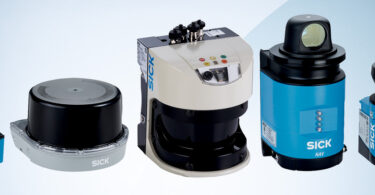http://youtu.be/_8jnTv_RxRw
Many of us enjoy the thrill of an action-packed movie featuring an art thief dangling by a rope or skillfully maneuvering his way under and over various laser beams. As spectators, we're awed by the acrobatic moves of these cunning thieves. We may even be silently hoping they are able to successfully flee the scene before the alarms sound and the security guards burst through the doors.
But real-life is much different than the scenes captured by Hollywood filmmakers.
In the real world, protecting these fine works of art is an incredibly important task. A task that requires sophisticated, reliable technology.
Not Just Any Security System
With Egyptian artifacts dating from 3500 BC and paintings from Rembrandt and Caravaggio, it's no wonder a high-tech security system is in place at Vienna's Kunsthistorisches Museum. Home to more than 700,000 coins alone, the Kunsthistorisches Museum is one of the most important museums in the world.
Protecting these pieces of art, however, requires a security system that enables museum goers to get close enough to the artwork to enjoy it, without making the artwork susceptible to theft or degradation.
As a result, there are two main focuses for protecting the various collections in the Kunsthistorisches Museum:
- Reducing the number of false alarms
- Protecting artwork from vandalism
The Precedent
Unfortunately, tightened measures are often the result of some type of security breech.
In 2003, the Cellini Salt Celler, also known as the “Saliera,” was stolen from the Kunsthistorisches Museum. The gold sculpture, worth an estimated $65 million, was a highly valuable piece of art. Prior to the theft, several false alarms had occurred during the day — likely causing security to be less attentive.
This incident served as the basis for implementing security solutions with fewer false alarms.
The Solution
Since taking over as the Head of Security Management at the Kunsthistorisches Museum, Felia Brugger has made it a priority to reduce the number of false alarms. To prevent future incidents like the one that occurred in 2003, Brugger decided to install SICK laser scanners due to their accuracy and reliability. “There are practically no false alarms,” according to Brugger. “We receive exact data about any instance of someone coming too close to a painting, enabling us to react immediately.”
These laser scanners are also able to detect spray mists that are used to vandalize paintings and provide an incredible amount of detection flexibility. When exhibits are changed, there are very few, if any, adjustments that need to be made to the system.
SICK laser scanners can be installed vertically to protect paintings and walls, or they can be installed horizontally to monitor ceilings and floors.
That's one smart safety solution!
Your Turn…
Do you have highly valuable items that need to be protected? What safety systems do you use? Tell us in the comments below.





